The Dynamics of Tarot in Future Predictions
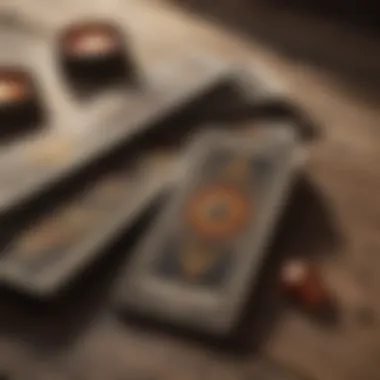
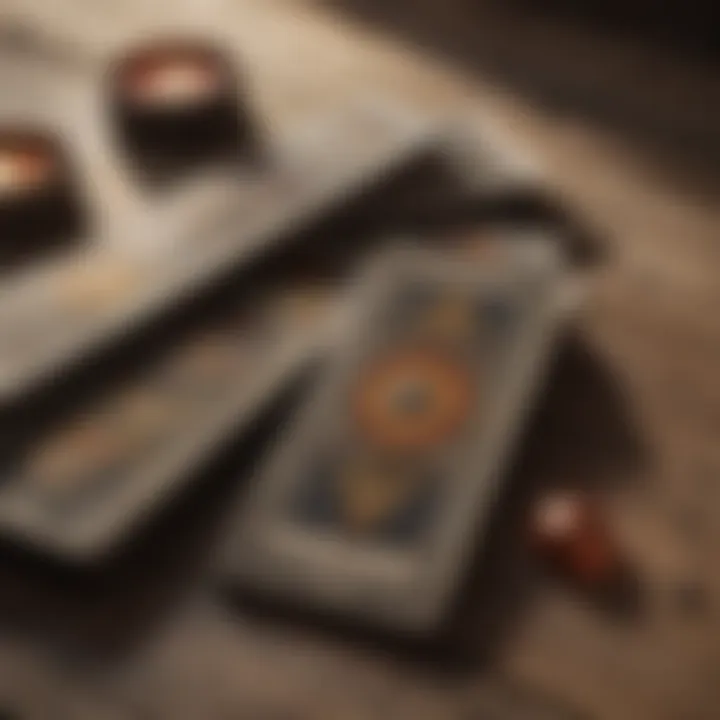
Intro
The practice of tarot is often steeped in mystique, acting as a bridge between the present and the future. Each card holds a universe of interpretations, offering insights that can illuminate the path ahead. As we navigate through uncertainties in life, tarot serves as a tool for reflection and guidance, helping individuals explore possibilities previously hidden from view.
In this article, we shall delve into the intricacies of tarot, shedding light on its usage for future predictions. Understanding its rich history, the various tarot spreads available, and the significance of intuitive interpretation is crucial in grasping the depth of tarot readings. More than mere fortune-telling, tarot can be a profound resource for self-discovery and psychological well-being.
By the end of our exploration, you will have a clearer grasp on how tarot can be integrated into daily life, whether you’re a seasoned reader or just starting on this journey. So, let’s embark on this voyage into the world of tarot, where each shuffle of the cards may reveal a hidden truth or a guiding light.
Foreword to Tarot and Its Evolving Role
Tarot, often viewed through a lens of mystique and skepticism, has evolved far beyond its traditional boundaries. The importance of this topic in the exploration of future predictions lies in its multifaceted nature. Tarot is not merely about forecasting events; it serves as a bridge between the conscious and subconscious, offering insights that resonate deeply with individuals seeking clarity in their lives.
Defining Tarot
At its core, tarot is a deck of cards that reflects different human experiences and archetypes. Each card holds distinct symbolism, crafted through a rich tapestry of culture, mythology, and psychology. A typical tarot deck comprises 78 cards, divided into the Major and Minor Arcana. The Major Arcana encapsulates significant life themes, while the Minor Arcana delves into the day-to-day aspects of life.
People engage with tarot in diverse ways. For some, it’s a tool for divination, providing guidance on choices and future possibilities. Others view it as a means for introspection, where card readings prompt deep reflection about oneself and one’s path. This flexibility in interpretation underscores the tarot's dynamic role in today's society.
Historical Context of Tarot
The history of tarot is as twisty as a backroad. Its earliest origins trace back to 15th-century Europe, though the precise beginnings remain somewhat foggy. Initially, tarot cards were used for playing games, not for divination. It wasn't until the 18th century that tarot gained traction as a mystical tool, intertwined with esoteric practices.
Different cultures have infused their interpretations into tarot over the centuries, leading to an array of styles and decks—like the Rider-Waite-Smith or Thoth decks—each with unique imagery and symbolism. This diverse historical context enhances its significance today.
From the dusty tomes of medieval scholars to modern practitioners clicking through digital tarot apps, the evolution of tarot reflects broader changes in society's understanding of divination and its relevance in human experience. Ultimately, reflecting on its history helps current and future practitioners grasp the depth of this ancient tool.
"History is a guide to navigate our future. The tarot, as it evolved, mirrors humanity's psychological journey."
Through these discussions, one recognizes that tarot, while steeped in tradition, continues to adapt. Its role in future predictions is not stagnant; rather, it grows hand in hand with society's needs and understanding.
As we delve deeper into the structures and interpretations involved in tarot readings, the conversation will expand into both the artistic and analytical techniques integral to effective tarot practice.
The Structure of Tarot Decks
Understanding the structure of tarot decks is crucial for anyone delving into the art of tarot reading and future predictions. A deck isn't just a random collection of cards; it's a carefully crafted system designed to provide insights and guidance. This structure encapsulates the wisdom of generations and offers a framework within which readers can explore their questions about the future. The cards are divided into two main segments: the Major Arcana and the Minor Arcana. Each part plays a distinct role, with the former often capturing significant life events and spiritual lessons, while the latter deals with everyday aspects of life.
This foundational structure aids in developing a deeper understanding of how each card functions in a reading. Recognizing whether a card comes from the Major or Minor Arcana, for instance, can significantly influence the interpretation of that card’s meaning. By grasping these nuances, tarot practitioners can offer more nuanced readings and effectively address the queries posed by those seeking insight.
Major Arcana - Symbolism and Significance
The Major Arcana consists of twenty-two cards, each brimming with rich symbolism and powerful meanings. These cards often represent critical life themes, spiritual lessons, and major life events. For example, The Fool symbolizes new beginnings and the potential that lies in every choice, while The World signifies completion and fulfillment. The essence of these cards transcends earthly concerns and taps into the spiritual journey of the querent.
It’s important to approach the Major Arcana not merely as a list of symbols, but as a narrative that unfolds across a reading. Each card reflects a profound aspect of life, and their arrangement can tell a story, providing a roadmap for the reader and the querent alike. The presence of Major Arcana cards during a reading often signals that the issues at hand are of considerable weight, emphasizing the need for deep introspection.
"Each card in the Major Arcana serves as a chapter in the rich story of our lives, guiding us through the labyrinth of existence."
Minor Arcana - Understanding the Suits
The Minor Arcana is divided into four suits: Cups, Pentacles, Swords, and Wands. Each suit corresponds to different aspects of everyday life and emotional experiences. Cups, for example, deal with emotions and relationships, while Pentacles focus on material matters and financial security. Swords are often about thoughts, conflicts, and intellect, whereas Wands signify inspiration, action, and enterprise.
Understanding the dynamics within these suits allows readers to read the tarot more effectively. Each suit also consists of numbered cards and court cards, including Pages, Knights, Queens, and Kings, which collectively paint a vivid picture of personal circumstances and challenges. When exploring the Minor Arcana, practitioners can glean insights into daily life, recognizing patterns and opportunities for growth or change.
The interplay between Major and Minor Arcana can be especially revelatory. A Major Arcana card that appears alongside a number of Minor Arcana cards may suggest how profound life lessons are manifesting in mundane situations. Conversely, a predominance of Minor Arcana could indicate that everyday issues are currently overshadowing larger spiritual lessons.
In this way, the structural elements of tarot decks provide essential tools for interpreting the cards and uncovering the vast tapestry of meaning within a reading.
Common Tarot Spreads for Future Predictions
In the realm of tarot, spreads serve not just as a method to lay out the cards, but rather as essential frameworks guiding readers to uncover deeper insights. By utilizing specific spreads, one can streamline the interpretation process, allowing intuition to flourish amidst structured inquiry. Each spread has its own inherent significance, designed to address various questions and situational nuances. Focusing on common tarot spreads amplifies the predictive potential and helps individuals gain clarity about their paths ahead.
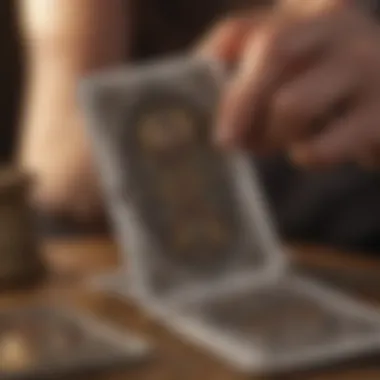
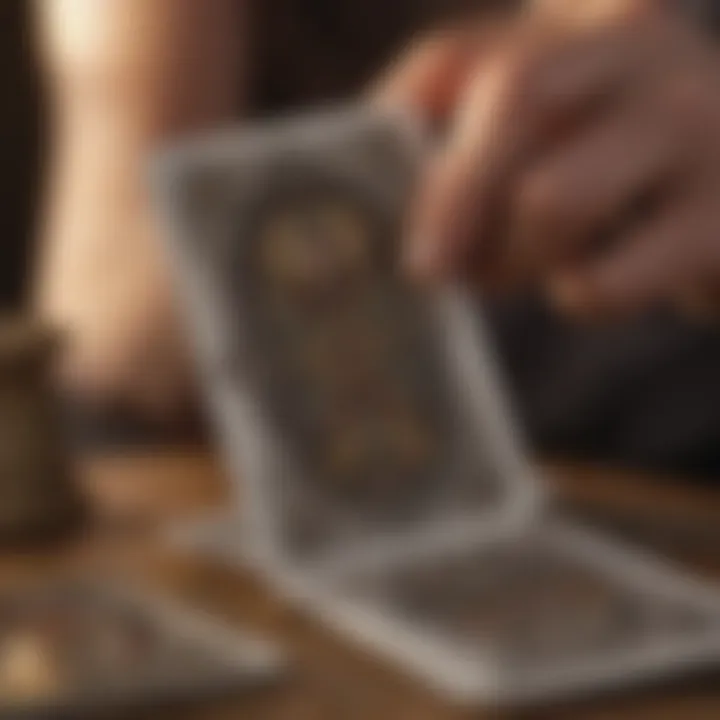
The Three-Card Spread
One of the simplest yet profoundly enlightening methods is the Three-Card Spread. It effectively distills complex issues into three essential insights. Typically, each position corresponds to the past, present, and future. This tripartite framework aids querents in seeing how past influences might shape current situations and set the stage for future developments.
Each card drawn can reveal a layer of meaning:
- First Card: Represents past influences or events that are currently shaping the question at hand.
- Second Card: Illustrates the present situation, shedding light on current challenges, dynamics, or opportunities.
- Third Card: Offers a glimpse into potential outcomes, insights, or actions that can be taken moving forward.
Integrating this spread into one’s practice can not only foster greater intuition but also encourage a reflective perspective. As one contemplates the interplay of the cards drawn, they may discover latent patterns or connections overlooked previously.
Celtic Cross Spread
The Celtic Cross Spread is often heralded as a classic in the tarot community, crafted to provide a comprehensive overview of a situation. This ten-card layout explores various dimensions of a question—from the influences impacting the situation to the likely outcome.
The positions in this spread delve into:
- Present Situation: The core query or challenge.
- Immediate Challenge: What blocks or hinders progress.
- Subconscious Influences: The underlying motivations or beliefs.
- Past Influences: How prior factors have molded the current situation.
- Conscious Influences: The querent’s current mindset or attitudes.
- Near Future: Upcoming events or possibilities on the horizon.
- Influences from Others: External forces affecting the situation.
- Hopes and Fears: The querent’s internal emotional landscape.
- Outcome: The likely result based on current energies.
This spread invites a holistic approach, urging readers to consider multiple factors interplaying within a scenario. The complexity of the Celtic Cross often leads to rich discussions, some argue it’s worth analyzing several times, especially when dealing with pivotal life decisions.
Relationship Spread
When seeking clarity in matters of the heart, a Relationship Spread can prove to be an invaluable tool. Often tailored for couples or individuals interested in understanding the dynamics of their connections, this spread can yield powerful revelations. Typically, one version of this spread draws cards for both parties involved and the relationship itself.
Here’s how a basic format usually breaks down:
- Person A’s Views: What one partner perceives in the relationship.
- Person B’s Views: The second partner’s perspective.
- Shared Energy: The dynamic created by both individuals.
- Strengths: What binds the relationship positively.
- Weaknesses: The possible challenges or areas needing focus.
- Advice: Suggestions for nurturing the bond further.
Ultimately, each of these spreads adds layers of understanding to the querent's inquiry. By aligning the right spread with the question asked, practitioners can unearth profound insights, fostering clarity in what might otherwise feel convoluted.
"The right tarot spread acts like a mirror, reflecting not just possibilities, but illuminating paths previously left unexplored."
Interpreting Tarot Cards
The art of interpreting tarot cards stands as a cornerstone in the practice of tarot reading. It is here that the mundane and the mystical intertwine, crafting a narrative that speaks directly to the querent’s life. The beauty of tarot lies in the cards' duality, where each symbol cradles a universe of meanings waiting to be uncovered. This process is not merely about pulling a card and reading what it says in the guidebook; rather, it’s about forging a connection with the cards, the question at hand, and ultimately, the seeker’s journey.
Effective interpretation requires a finely tuned balance between the intuitive and the analytical. While some may find comfort in established meanings, others might feel that their personal insight bears the most weight. The ability to listen to one's inner voice can illuminate hidden truths, while analytical skills can help to systematically piece together fragmented thoughts. In this way, interpreting tarot cards becomes an expansive dialogue with oneself, layered with depth that can provide clarity or direction in tumultuous times.
Intuitive vs. Analytical Approaches
Diving further into the approaches of interpretation, we can segment the techniques into intuitive and analytical styles. Many readers lean one way or the other, but there’s value in finding a middle ground.
- Intuition-Based Reading: This method relies heavily on personal insight and the reader’s emotional responses to the cards. For instance, when a querent draws The Tower, one reader might perceive impending upheaval based strictly on a negative gut feeling, while another could see it as an urgent call for change. Intuitive readers often trust their instincts to guide meaning, much like artist painting with feelings rather than strict lines.
- Analytical Reading: In contrast, an analytical approach involves a methodical dissection of the tarot cards. This can include interpreting specific symbols, numerology, or astrological correspondences. For example, if The Lovers appears, an analytical reader might focus on the interplay of choices and connections, interpreting the card’s traditional meaning against the context of the question asked. This not only brings in a breadth of knowledge but also can aid in grounding the interpretation in recognizable themes.
The union of both approaches allows readers to gainsay the rigidity of tradition while also being anchored in some form of structure. This blend can yield a richer tapestry of meaning in each reading.
Importance of Context in Interpretation
When it comes to interpretation, context acts as the compass guiding the reader and querent through the reading. Without this essential backdrop, the message of the cards could easily drift into vagueness.
- Personal Context: A querent’s background, current emotions, and life situation are critical in shaping how the cards are received. For instance, a single card like The Hermit could signal solitude for someone seeking wisdom, but for another individual facing loneliness amidst a crisis, the same card might carry heavier implications of isolation.
- Situational Context: The questions posed during the reading hold immense weight, too. A reading focused on love will interpret The Chariot differently from one seeking clarity on a career path. This situational aspect helps zero in on what the cards resonate with in real-life events, making them relevant and applicable.
- Environmental Context: Lastly, the atmosphere during the reading—the presence of distractions, the emotional state of the querent, or even a reader's own mood—can shape how cards are interpreted. A chaotic environment may yield turbulent readings, while a calm, focused setting often leads to more profound insights.
"The power of tarot is not in the cards themselves, but in the conversations and connections that emerge through their interpretation."
By weaving all these elements together, interpreters can unlock the true potential of tarot as a tool for insight. The interplay between intuitive feel, analytical thought, and contextual awareness creates a rich tapestry of understanding, allowing for wisdom that extends beyond mere prediction.
Psychological Implications of Tarot Readings
When we delve into the world of tarot, it's not just about predicting the future or uncovering hidden truths. There’s a profound psychological dimension embedded in the practice that influences both the reader and the querent, or the person seeking guidance. Understanding this aspect can help harness tarot as a valuable tool for self-discovery and mental well-being.
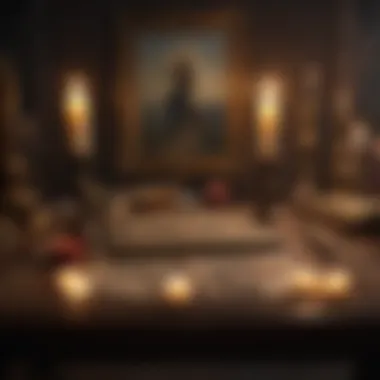
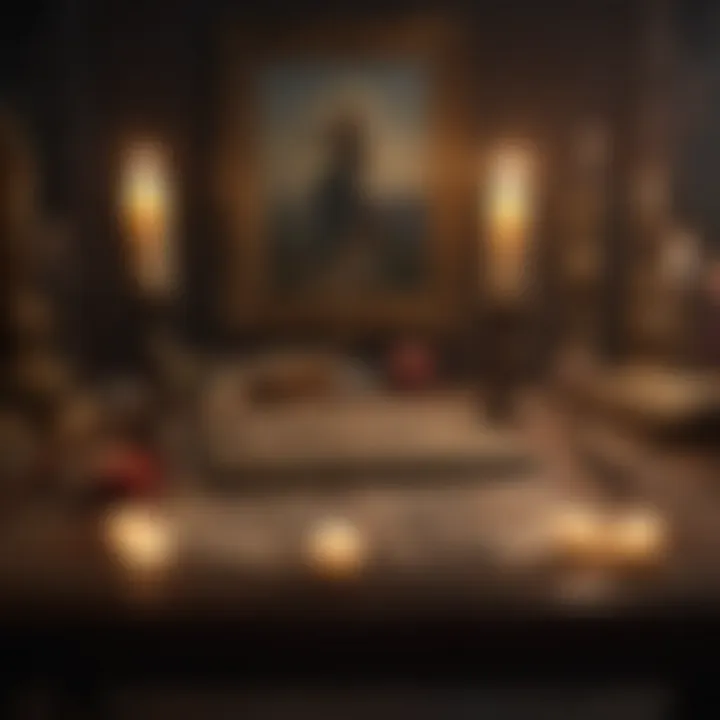
Tarot as a Tool for Self-Reflection
Tarot serves as a mirror, reflecting the inner thoughts, fears, and desires of individuals. When someone draws cards, they are not merely choosing random images; they are engaging with their subconscious mind. This act of interpretation can spark significant self-reflection. For instance, a card like the Two of Swords, often symbolizing indecision, might prompt individuals to confront their own conflicts or choices they are avoiding.
The beauty of tarot lies in its ability to facilitate conversations with oneself. Here are a few key benefits of using tarot for self-reflection:
- Encourages Introspection: Tarot readings often lead to questions rather than answers. This questioning opens pathways for deeper thought, allowing individuals to analyze their emotions and motivations.
- Enhances Emotional Awareness: By interpreting cards that resonate with personal situations, individuals can better understand their emotional states, helping them name feelings that might have been buried.
- Promotes Clarity: The visual aspect of tarot can help clarify chaotic thoughts. An individual might lay out cards that tell a story, helping to organize their feelings around a situation.
In many cases, people report feeling a lighter emotional load after a reading. Although the predictions may not always be clear, the opportunity for self-exploration becomes a crucial takeaway.
The Role of Archetypes in Personal Insight
Archetypes are central to the tarot experience, playing a vital role in how individuals interpret each card's meaning. Carl Jung, a notable psychologist, discussed how archetypes are universal symbols that reside in the collective unconscious. Each tarot card corresponds to these archetypes, allowing individuals to connect deeply with their own psyche.
For example, the Fool card embodies new beginnings and adventure. Someone who feels stuck might see this card and reflect on their own hesitance to take risks. Such a connection can lead to personal revelations about growth and courage. Here’s why archetypes matter:
- Universal Themes: Archetypes resonate with shared human experiences. By tapping into these themes, tarot allows for recognition of personal struggles and victories, offering a sense of belonging and understanding.
- Guiding Narratives: When querents relate to an archetype, it helps guide their narrative, enabling them to explore their life's story through the lens of the cards.
- Empowerment: Recognizing oneself in an archetype can be empowering. It reminds individuals that they are not alone in their experiences, which can be profoundly comforting during challenging times.
"Tarot is not just a game of fortune, but a canvas for the psyche."
Utilizing the archetypal imagery in tarot readings exacerbates understanding and personal insight. It's not uncommon for individuals to walk away from a reading not only with predictions but with a clearer sense of self, as the cards gently lead them through their mental landscape.
In summary, the psychological implications of tarot readings extend far beyond simple predictions. They invite introspection and personal insight while illuminating the path toward greater self-awareness and mental clarity.
Cultural Perspectives on Tarot
Understanding the diverse cultural dimensions of tarot is essential in grasping its multifaceted role in predicting future events. Tarot is not merely a collection of cards; it has evolved into a complex psychological and spiritual tool that manifests differently across various cultures. Each cultural interpretation adds a layer of depth that enhances its practice, making it not just a fortune-telling device but a means of connection and reflection for those who consult it.
These cultural perspectives influence how individuals approach tarot readings and interpret the cards. Different societies perceive fate, destiny, and self-awareness uniquely, which directly affects the manner in which tarot is utilized. Exploring these viewpoints serves several benefits:
- Broader Understanding: Engaging with multiple cultural interpretations of tarot fosters a wider comprehension of its significance. Readers gain insight into how tarot transcends mere entertainment or superficial guidance.
- Richer Context: Context is crucial in tarot reading. Understanding the cultural background can guide readers to appreciate why certain symbols or spreads resonate differently with various populations.
- Potential for Innovation: By examining diverse traditions, practitioners can adapt and evolve their own methods, drawing inspiration from innovative cultural interpretations.
Tarot in Western Esotericism
The tarot's presence within Western esoteric traditions is particularly noteworthy. Rooted in mysticism, the tarot has flourished alongside other spiritual practices. Practitioners often engage with tarot not just for divination but as a means of connecting with deeper philosophical and metaphysical concepts. The connection between tarot and Western esotericism emphasizes the use of archetypes, symbolism, and the interplay between the human psyche and the universe.
In Western occult practices, every card in the tarot deck carries profound significance. For instance, the Major Arcana cards represent key life lessons and spiritual milestones.
- The Fool, often symbolizing new beginnings, introduces seekers to journeys of self-discovery.
- The Tower, conversely, might reflect abrupt changes, forcing individuals to confront challenges directly.
Incorporating astrological and alchemical philosophies with tarot, many practitioners view readings as a path to greater self-awareness and enlightenment. The cards act as mirrors, presenting not just the future but underlying truths about one’s circumstances.
Tarot Across Different Traditions
Beyond Western interpretations, tarot finds itself woven into various cultural tapestries around the world. Different traditions infuse unique rituals and meanings into the reading experience.
In Eastern philosophies, for example, tarot may intersect with concepts such as karma or dharma. Here, cards might be interpreted through lenses like Taoism or Buddhism, emphasizing balance, harmony, and the cyclical nature of existence.
Similarly, Indigenous cultures often adapt tarot’s symbolism to align with their spiritual beliefs. They might view the cards as not just tools for prediction but as instruments of healing and introspection. This perspective illustrates that tarot can serve diverse functions based on cultural beliefs:
- Predictive: In some contexts, it's primarily about foretelling future events.
- Healing: In others, it offers insights that promote emotional and spiritual healing.
- Community: In many traditions, tarot is a communal activity, encouraging groups to explore personal and collective paths.
"Tarot is more than mere cards; it is a bridge connecting the microcosm of individual experiences with the macrocosm of universal truths."
By examining how tarot evolves across cultural landscapes, practitioners and enthusiasts alike can appreciate the depth and adaptability of this sacred practice. This recognition opens channels for richer, more insightful readings, where every card draw has the potential to reveal not just personal insights, but the collective wisdom of humanity, shaped by tradition and time.
The Relevance of Tarot in Modern Society
The relevance of tarot in today’s fast-paced world has exploded over the years. People are grappling with uncertainties, and tarot provides a window through which they can explore their past, present, and potential future. It serves as a guiding light for individuals who seek clarity amidst the chaos of modern life. As perceptions shift towards a holistic approach to mental health and well-being, tarot emerges not merely as a mystical tool but as a legitimate option for personal growth and development.

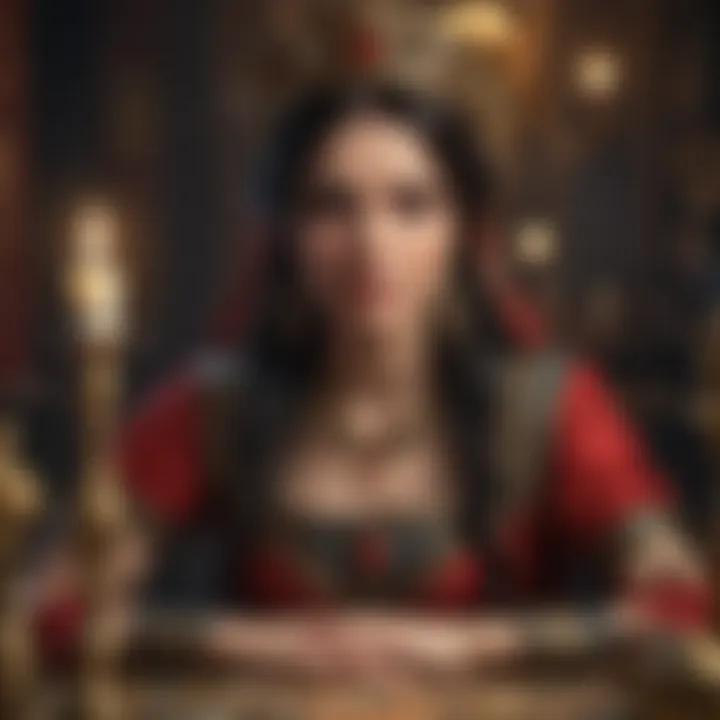
Tarot in Personal Development and Coaching
Tarot is increasingly being woven into the fabric of personal development and coaching. Life coaches and therapists often employ tarot as a tool to facilitate deeper discussions. By using card spreads, individuals can gain insights into their motivations and hurdles that might not be easily articulated. For instance, when a person draws the Tower card, it can symbolize abrupt change, prompting discussions about fear of the unknown or the necessity for transformation.
Here are several ways tarot is utilized in personal growth settings:
- Clarifying Goals: Tarot can help individuals clarify life goals by providing insights that surface subconscious desires. This dialogue can be pivotal in aligning their actions with their aspirations.
- Enhancing Self-Awareness: Tarot reveals patterns in decision-making and behavioral tendencies that people often overlook. By recognizing these patterns, individuals can make more informed choices moving forward.
- Navigating Challenges: When facing difficult decisions, tarot can provide various perspectives. Each card carries its own narrative, allowing users to contemplate multiple angles of a situation.
This usage brings a fresh wind to traditional personal development methods, merging introspection with a more creative approach that differentiates it from standard practices.
The Intersection of Tarot and Digital Platforms
The digital age has ushered in an era where tarot readings have transitioned from being confined to cozy, candle-lit rooms into the palm of one’s hand. Apps and online platforms that offer tarot readings have proliferated, making this ancient practice accessible to a global audience. This evolution presents both opportunities and challenges.
Online tarot platforms are not only catering to enthusiasts but also to a younger demographic that is increasingly curious about spirituality and self-discovery. Here are a few facets of this intersection:
- Accessibility: Anyone with internet access can consult with skilled tarologists, thereby democratizing tarot readings significantly. Users can schedule sessions or use apps that generate readings instantly, catering to varying preferences.
- Community Building: Social media platforms have birthed vibrant communities of tarot enthusiasts, encouraging sharing experiences and interpretations. Forums like those on Reddit provide spaces where users can discuss readings, ask for interpretations, and learn from one another.
- Education and Resources: Online resources have flourished, with blogs and videos providing learning materials for those looking to delve deeper into tarot's intricacies. This wide array of resources fosters a greater understanding of tarot, ensuring that it evolves rather than stagnates.
"Tarot serves as a language that anyone can learn, a way to interpret the symphony of life’s experiences through imagery and narrative."
As we move forward, tarot stands in a unique position to facilitate meaningful dialogues about self-discovery, mental wellness, and personal evolution.
Challenges in Tarot Reading
Navigating the world of tarot is not merely about shuffling cards and interpreting images; it involves a nuanced understanding of both the tool itself and the inherent challenges that come with its practice. For those embarking upon the journey of tarot reading—whether professional practitioners or curious seekers—recognizing these challenges is critical for growth and proficiency. This section delves into two primary challenges: skepticism, which can cloud judgment and hinder acceptance, and ethical considerations, which guide responsible practice.
Overcoming Skepticism
Skepticism can be quite the barrier when it comes to tarot reading. Those who are unfamiliar with or resistant to esoteric practices may view tarot as nothing more than a parlor trick or an outdated relic from a bygone era. Yet, overcoming this skepticism is essential for a fruitful reading experience. Here are some strategies to help bust through that doubt:
- Education: Knowledge is power. Understanding the historical context of tarot can bolster one’s case against skepticism. For instance, knowing how tarot has been used through ages—from card games to divinatory tools�—can help paint a broader picture of its significance.
- Personal Experience: Often, direct experience softens skepticism. Engaging in a few readings—whether as a reader or querent—may reveal insights that simply reading about it cannot. These personal experiences can provide a first-hand understanding of tarot's depth.
- Open Dialogue: Discussing tarot with an open mind can also aid in dismantling skepticism. Engaging with both supporters and critics can lead to a better understanding of the practice. It’s less about convincing someone and more about fostering a space that allows exploration and questionng.
Ethical Considerations in Tarot Practices
Ethics in tarot reading is akin to the moral compass that guides practitioners. The responsibilities that come with reading for others should not be taken lightly. Awareness of ethical considerations serves to protect both the reader and the client. Some key points to reflect upon include:
- Informed Consent: Before diving into a reading, it’s crucial that clients are made aware of the nature and limitation of tarot. Tarot is not a substitute for professional advice—whether psychological, legal, or medical. Clarity about these aspects fosters an atmosphere of respect.
- Confidentiality: Just as a doctor keeps a patient’s information private, a tarot reader must honor the privacy of their clients. Keeping the details of a reading confidential is paramount in establishing trust.
- Responsibility of Interpretation: A skilled reader doesn’t just deliver what the cards might suggest; they carry the weight of those interpretations. It’s important to convey messages with sensitivity and care, always considering the potential impact of the words shared.
In summary, the challenges of skepticism and ethical considerations form the backbone of responsible tarot reading. By addressing these hurdles, practitioners can elevate their craft, creating a more profound experience for both themselves and their clients.
"The future is a mystery, but a tarot reading, when approached ethically and openly, can shed light on paths and possibilities."
Through navigating these challenges, one can harness the true potential of tarot, transforming it from mere cards into a powerful ally for insight and growth.
The End: The Future of Tarot and Its Practitioners
The world of tarot is as dynamic as the shifting sands of time. Its practitioners stand at a crossroads of tradition and innovation, ushering in a new era for tarot's relevance in our fast-paced lives. The evolution of tarot is not just about cards and spreads; it's fundamentally tied to the interplay between the querent’s inquiries and the reader’s interpretations, which is a fascinating aspect to consider.
As we look to the future, ongoing research continues to shed light on how tarot can serve various psychological and spiritual needs.
Ongoing Research and Understanding Tarot's Impact
The scholarly landscape surrounding tarot is gradually expanding. Researchers and psychologists are investigating its therapeutic potential and the underlying mechanisms that make it effective. Studies are exploring how tarot readings can foster self-discovery, offering individuals unique insights into their desires and fears.
This exploration is crucial because it challenges the stereotypes often associated with tarot as mere divination. By bridging empirical research and ethereal practices, tarot stands to gain credibility. New methodologies are being developed to analyze readings from psychological standpoints, allowing practitioners to communicate the benefits of tarot in more relatable terms.
For instance, a recent study indicated that engaging with tarot can activate cognitive restructuring, leading to improved decision-making skills as individuals navigate life's complexities. In essence, understanding tarot's impact can elevate the practice from hobbyist endeavors to recognized methods of personal growth.
The Importance of Personal Interpretation
Personal interpretation remains at the heart of tarot. Each reader interprets cards through their unique lens of experiences and insights. This flexibility is one of the charm of tarot.
- It allows for diverse perspectives across different cultures and beliefs.
- Every tarot session creates a new story, shaped by the queries posed and the reactions from the reader. Each reading, therefore, becomes a collaborative journey.
What's particularly striking is how this personal touch fosters a deep connection between the reader and the querent. A skilled practitioner can weave the cards' messages into themes that resonate universally while being tailored to individual predicaments.
“The beauty of tarot lies not just in the cards you draw but in what they inspire within you.”







